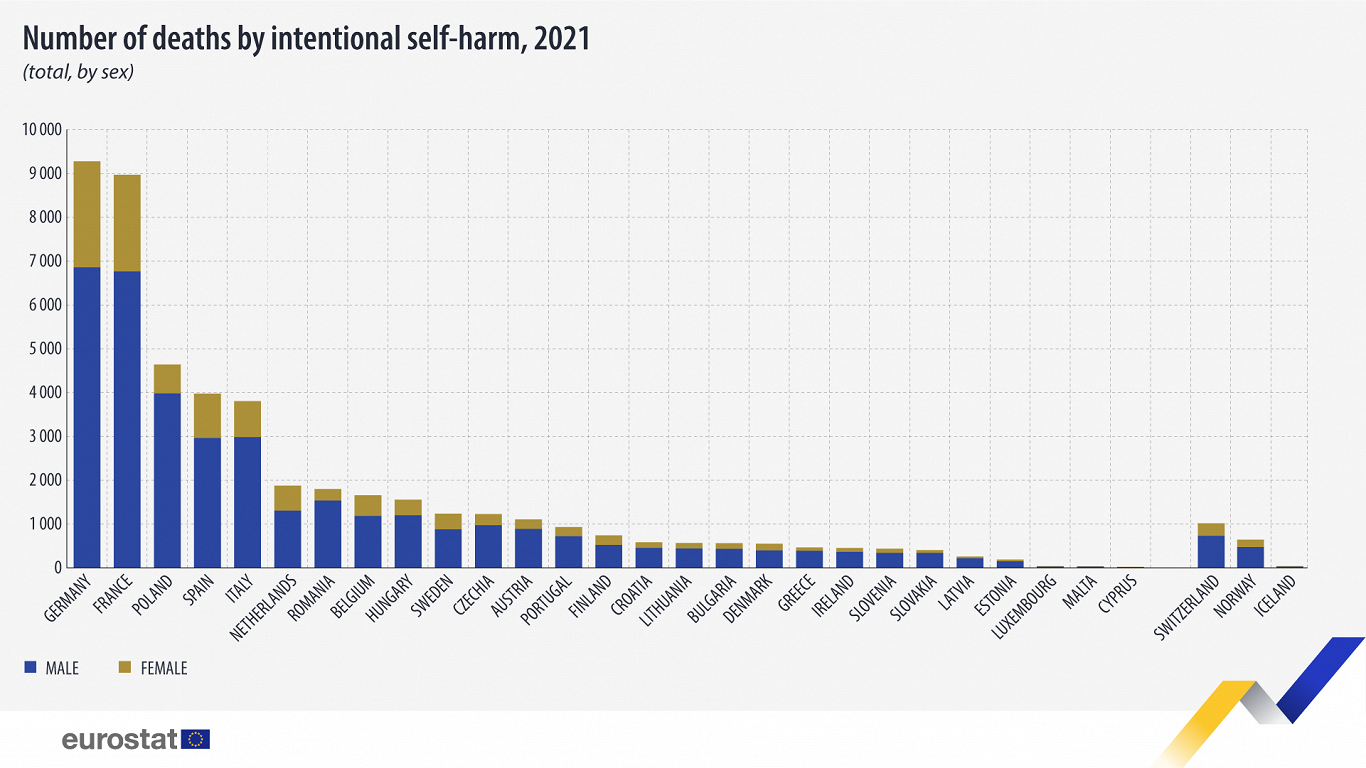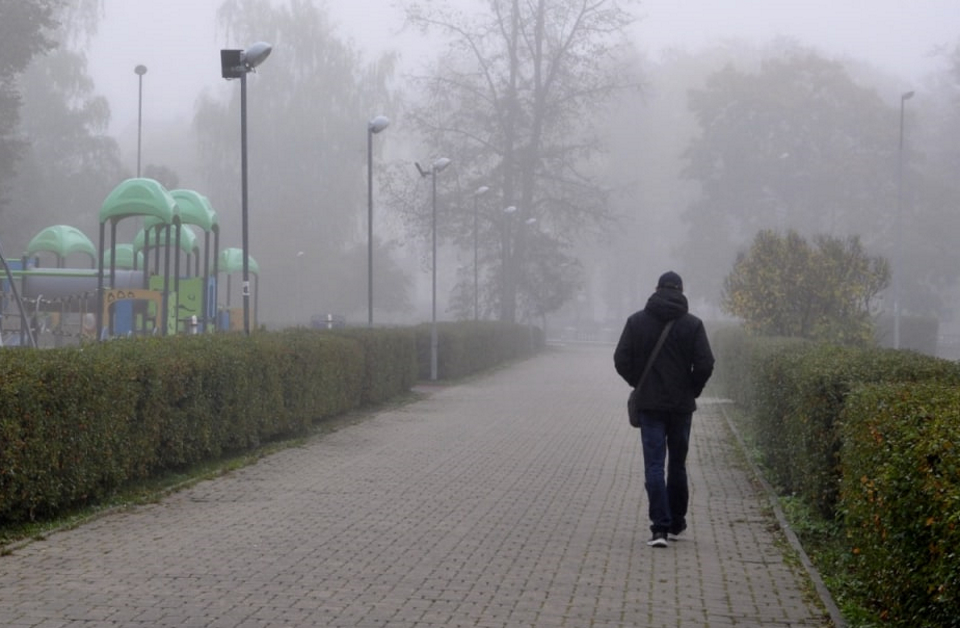According to statistics published by Eurostat to mark the occasion, the suicide trend in the European Union is generally positive (i.e. fewer people are killing themselves), though unfortunately Latvia still ranks as one of the countries with a higher than average suicide rate.
In 2021, there were 47 346 deaths due to suicide in the EU, corresponding to 0.9% of all deaths reported that year. This is the equivalent of an average of 10.2 deaths per 100 000 people.
Compared with 2011, the first year for which there is data, the number of deaths by suicide decreased by 13.3% (down 7 277 deaths). In 2011, the standardised death rate for suicide in the EU was 12.4 deaths per 100 000 people.
Among EU countries, Slovenia registered the highest rate of suicide in 2021 with 19.8 deaths per 100 000 inhabitants, followed by Lithuania (19.5) and Hungary (15.7).
Though the number of suicides in Latvia (257) is small by comparison with more populous EU member states, when population size is taken into account things are more concerning. With a population of 1.9 million, Latvia's rate per 100,000 inhabitants is 13.38 suicides, though this is lower than both Lithuania's and Estonia's (14.01) rate.

Cyprus recorded the lowest standardised death rates for suicide (2.7 deaths per 100 000 inhabitants), ahead of Greece (4.2) and Italy (5.9).
When looking at regional data, the Limousin region in France recorded the highest standardised death rate for suicide at 21.9 deaths per 100 000 inhabitants. This region was followed by the Dél-Alföld region in Hungary (21.7) and Vzhodna region in Slovenia (21.6).
As in previous years, the suicide rate was higher among men than women, with men accounting for 76.7% of all deaths by suicide. In 2021, 210 Latvian men took their own lives and 40 women.
The highest number of suicide deaths in the EU was recorded in the 45 to 64 age group, with 17 441 deaths, accounting for 37% of the total. The 65 and over age group followed closely with 15 998 deaths, representing 34% of the total.
Source dataset: hlth_cd_asdr2
According to the World Health Organization (WHO): "Suicide is a major public health challenge, with more than 700 000 deaths each year globally. Each suicide has far-reaching social, emotional, and economic consequences, and deeply affects individuals and communities worldwide."
World Suicide Prevention Day (WSPD) was established in 2003 by the International Association for Suicide Prevention in conjunction with the WHO. The 10 September each year aims to focus attention on the issue, reduce stigma and raise awareness among organizations, governments, and the public, giving a message that suicides are preventable.






























